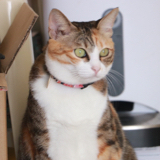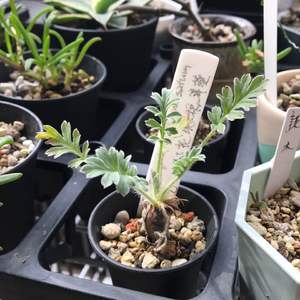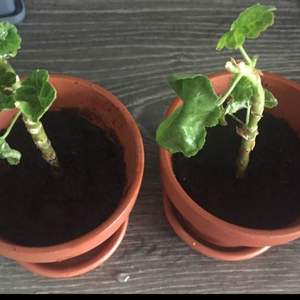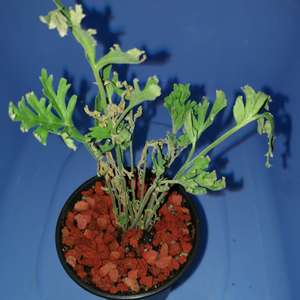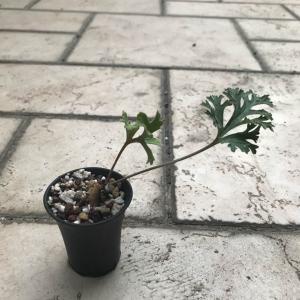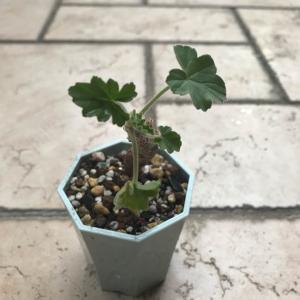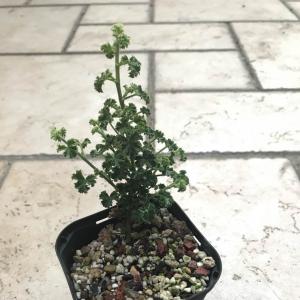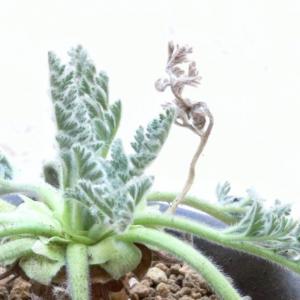成长记
Mandy Fleming
2018年01月31日

I now added "Pelargonium Radens - citroengeranium" in my "garden"


1
1
Spotless Mind:I ve the same 😇
文章
Dummer. ゛☀
2017年09月29日

Scientific Name
Pelargonium peltatum (L.) L’Hér.

Common Names
Ivy-leaved Geranium, Ivy-leaf Geranium, Ivy Geranium, Cascading Geranium, Hanging Geranium
Synonyms
Dibrachya clypeata, Dibrachya peltata, Geraniospermum lateripes, Geraniospermum peltatum, Geranium peltatum, Pelargonium lateripes, Pelargonium x peltatum
Scientific Classification
Family: Geraniaceae
Genus: Pelargonium

Flower
Color: Pink
Bloom Time: Spring and early summer
Description
Pelargonium peltatum is a climbing, semi-succulent perennial, trailing through other trees and shrubs in its habitat. The climber has long, straggling shoots, which can reach up to 6.5 feet (2 m). This plant is characterized by its ivy-shaped leaves. Some of the leaves have distinctive zonal markings, but this is not a common characteristic. The inflorescence is an umbel of 2 to 9 pink flowers, with 5 dark-streaked or marked petals each up to 0.8 inch (2 cm) long. It flowers mainly in spring and early summer.
Hardiness
USDA hardiness zone 9b to 11b: from 25 °F (−3.9 °C) to 50 °F (+10 °C).

How to Grow and Care
Work organic compost into high-quality container potting soil that contains ingredients such as peat moss, vermiculite and perlite. Use this compost/soil mixture to fill pots for your Pelargoniums. Good drainage is essential to Pelargoniums so choose containers with adequate drainage holes. If your Pelargoniums are already in pots, spread organic compost lightly on the soil surface and work in, taking care not to dig up the plant’s roots.
Choose locations getting direct sun for most Pelargoniums. They need at least six hours of sun daily. Martha Washington and Regal types prefer a site that is shady in the afternoon. All Pelargoniums need afternoon shade if your area regularly sees summer temperatures exceeding 90 degrees Fahrenheit (32 degrees Celsius).
Feed your Pelargoniums every two weeks with a balanced fertilizer like 10-10-10 or 20-20-20. Buy fertilizer that dissolves in water for easier application. Every third watering, add Epsom salts — magnesium sulfate — to the plant water — 1 teaspoon per 1 gallon — to provide magnesium. Or, add a slow-release fertilizer to the soil mix when you plant the geraniums in the pot — it feeds them all season.
Origin
Native to southern Africa, particularly South Africa.
Pelargonium peltatum (L.) L’Hér.

Common Names
Ivy-leaved Geranium, Ivy-leaf Geranium, Ivy Geranium, Cascading Geranium, Hanging Geranium
Synonyms
Dibrachya clypeata, Dibrachya peltata, Geraniospermum lateripes, Geraniospermum peltatum, Geranium peltatum, Pelargonium lateripes, Pelargonium x peltatum
Scientific Classification
Family: Geraniaceae
Genus: Pelargonium

Flower
Color: Pink
Bloom Time: Spring and early summer
Description
Pelargonium peltatum is a climbing, semi-succulent perennial, trailing through other trees and shrubs in its habitat. The climber has long, straggling shoots, which can reach up to 6.5 feet (2 m). This plant is characterized by its ivy-shaped leaves. Some of the leaves have distinctive zonal markings, but this is not a common characteristic. The inflorescence is an umbel of 2 to 9 pink flowers, with 5 dark-streaked or marked petals each up to 0.8 inch (2 cm) long. It flowers mainly in spring and early summer.
Hardiness
USDA hardiness zone 9b to 11b: from 25 °F (−3.9 °C) to 50 °F (+10 °C).

How to Grow and Care
Work organic compost into high-quality container potting soil that contains ingredients such as peat moss, vermiculite and perlite. Use this compost/soil mixture to fill pots for your Pelargoniums. Good drainage is essential to Pelargoniums so choose containers with adequate drainage holes. If your Pelargoniums are already in pots, spread organic compost lightly on the soil surface and work in, taking care not to dig up the plant’s roots.
Choose locations getting direct sun for most Pelargoniums. They need at least six hours of sun daily. Martha Washington and Regal types prefer a site that is shady in the afternoon. All Pelargoniums need afternoon shade if your area regularly sees summer temperatures exceeding 90 degrees Fahrenheit (32 degrees Celsius).
Feed your Pelargoniums every two weeks with a balanced fertilizer like 10-10-10 or 20-20-20. Buy fertilizer that dissolves in water for easier application. Every third watering, add Epsom salts — magnesium sulfate — to the plant water — 1 teaspoon per 1 gallon — to provide magnesium. Or, add a slow-release fertilizer to the soil mix when you plant the geraniums in the pot — it feeds them all season.
Origin
Native to southern Africa, particularly South Africa.
0
0
文章
Dummer. ゛☀
2017年09月29日

Scientific Name
Pelargonium cucullatum (L.) L’Hér.

Common Names
Wilde Malva, Hooded-Leaf Pelargonium, Tree Pelargonium
Synonyms
Pelargonium angulosum, Pelargonium cucullatum subsp. cucullatum
Scientific Classification
Family: Geraniaceae
Genus: Pelargonium

Flower
Color: Purple or pink
Bloom Time: Summer
Description
Pelargonium cucullatum is a fast-growing, fairly tall, sprawling shrub, up to 6.6 feet (2 m) tall. The leaves are up to 3.1 inches (8 cm) wide, grow upwards, forming circular bowls with jagged, red-tipped edges. The flowers are faintly scented, purple or pink and appear for several months over the summer.

How to Grow and Care
Work organic compost into high-quality container potting soil that contains ingredients such as peat moss, vermiculite and perlite. Use this compost/soil mixture to fill pots for your Pelargoniums. Good drainage is essential to Pelargoniums so choose containers with adequate drainage holes. If your Pelargoniums are already in pots, spread organic compost lightly on the soil surface and work in, taking care not to dig up the plant’s roots.
Choose locations getting direct sun for most Pelargoniums. They need at least six hours of sun daily. Martha Washington and Regal types prefer a site that is shady in the afternoon. All Pelargoniums need afternoon shade if your area regularly sees summer temperatures exceeding 90 degrees Fahrenheit (32 degrees Celsius).
Feed your Pelargoniums every two weeks with a balanced fertilizer like 10-10-10 or 20-20-20. Buy fertilizer that dissolves in water for easier application. Every third watering, add Epsom salts — magnesium sulfate — to the plant water — 1 teaspoon per 1 gallon — to provide magnesium. Or, add a slow-release fertilizer to the soil mix when you plant the geraniums in the pot — it feeds them all season.
Origin
Native to the south-western Cape of South Africa.
Pelargonium cucullatum (L.) L’Hér.

Common Names
Wilde Malva, Hooded-Leaf Pelargonium, Tree Pelargonium
Synonyms
Pelargonium angulosum, Pelargonium cucullatum subsp. cucullatum
Scientific Classification
Family: Geraniaceae
Genus: Pelargonium

Flower
Color: Purple or pink
Bloom Time: Summer
Description
Pelargonium cucullatum is a fast-growing, fairly tall, sprawling shrub, up to 6.6 feet (2 m) tall. The leaves are up to 3.1 inches (8 cm) wide, grow upwards, forming circular bowls with jagged, red-tipped edges. The flowers are faintly scented, purple or pink and appear for several months over the summer.

How to Grow and Care
Work organic compost into high-quality container potting soil that contains ingredients such as peat moss, vermiculite and perlite. Use this compost/soil mixture to fill pots for your Pelargoniums. Good drainage is essential to Pelargoniums so choose containers with adequate drainage holes. If your Pelargoniums are already in pots, spread organic compost lightly on the soil surface and work in, taking care not to dig up the plant’s roots.
Choose locations getting direct sun for most Pelargoniums. They need at least six hours of sun daily. Martha Washington and Regal types prefer a site that is shady in the afternoon. All Pelargoniums need afternoon shade if your area regularly sees summer temperatures exceeding 90 degrees Fahrenheit (32 degrees Celsius).
Feed your Pelargoniums every two weeks with a balanced fertilizer like 10-10-10 or 20-20-20. Buy fertilizer that dissolves in water for easier application. Every third watering, add Epsom salts — magnesium sulfate — to the plant water — 1 teaspoon per 1 gallon — to provide magnesium. Or, add a slow-release fertilizer to the soil mix when you plant the geraniums in the pot — it feeds them all season.
Origin
Native to the south-western Cape of South Africa.
0
0


